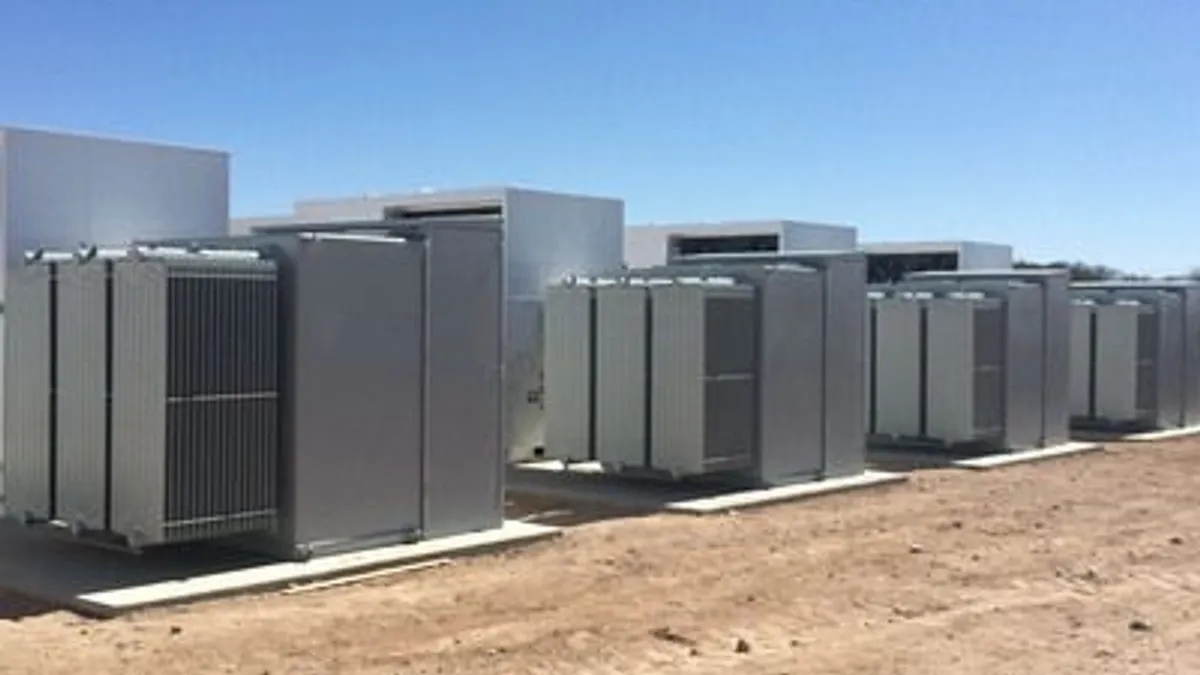Dive Brief:
- Consolidated Edison (Con Edison) and five other investor-owned utilities (IOUs) in New York filed implementation plans this week for direct procurement of scheduling and dispatch rights to energy storage systems.
- The filings are in response to the New York Public Service Commission's (NYPSC) December order, which formally adopted Democratic Gov. Andrew Cuomo's 1,500 MW of storage by 2025 target, in addition to a deployment target of 3,000 MW of energy storage by 2030.
- The timelines for the storage procurement processes seem "reasonable" and "appropriate," according to Bill Acker, executive director of New York Battery and Energy Storage Technology Consortium (NY-BEST), as the NYPSC ordered the storage facilities to be in service by the end of 2022. The six IOUs set a joint stakeholder meeting for March 29 to review the draft request for proposal, with plans to each execute the winning contracts in 2020.
Dive Insight:
While the utilities' timelines are in-step with one another, "the one challenge that exists" to deploying storage by 2022 is out of their control, Acker said.
"In order to participate in the wholesale markets, these projects in general will have to be ISO-interconnected and the ISO interconnection timeline takes very long," Acker told Utility Dive.
NY-BEST is part of an electrical system planning working group of the New York ISO (NYISO) and Acker said that, during a working group meeting on Monday, the ISO recognized the need to accelerate the interconnection timeline and "affirmed that they were going to be taking steps to look at the process."
The grid operator says it is working to improve the interconnection process.
"Just last year we put in place a number of improvements to our interconnection queue that have made the process more efficient," NYISO told Utility Dive via email. "We continue to engage with stakeholders, both through our open and transparent working group process and in other discussions, to determine if additional improvements can be made to meet the needs of developers, local utilities, and other stakeholders, while maintaining system reliability," it continued.
Con Edison, the largest IOU in the state and the local distribution utility serving the New York City area, is required to plan for the direct procurement of at least 300 MW of energy storage, with no specific requirement on energy capacity.
Con Edison's Orange and Rockland Utilities, Avangrid's subsidiaries, New York Electric & Gas and Rochester Gas & Electric, National Grid's subsidiary, Niagara Mohawk Power, and Central Hudson Gas & Electric were required to lay out plans for direct procurement to deploy at least 10 MW of energy storage each by the end of 2022.
"There are lots of parts to how this is actually going to work that still are getting worked out, but look, to their credit, the utilities have laid out an appropriate timeline and what looks like a fairly transparent process to do that," Acker said.
The utilities appear to have coordinated, establishing a stakeholder meeting together and harmonizing other requirements, which is a positive sign for the whole process, Acker said. "Having six disparate sets of rules would be much more difficult," he said.
As state actions regarding the integration of storage into wholesale markets go beyond the six utilities' plans, Acker said work to substantially accelerate the ISO interconnection timelines are very important, along with other determinations.
The NYISO is working on several key definitions to the storage interconnection process through its DER roadmap process, including dual participation, an aspect that was missing from its compliance filing with the Federal Energy Regulatory Commission's Order 841. While storage developers, such as Tesla, criticized NYISO for not specifying that storage devices could participate in both retail and wholesale markets, Acker said the NYISO's DER process is "on a slower timeline than the 841 compliance."
In another show of policy harmonization, the New York City Council is considering a bill that would require the mayor's office to issue a report on the feasibility of replacing in-city gas power plants with hybrid renewables-plus-storage facilities.
The NYPSC's December storage order already directed regulatory staff to work with other state agencies and Con Edison to file a study by July 1, 2019, about the potential of replacing gas peaker plants around the city with energy storage. There are about 3,400 MW of peaker plants around New York City with pre-1990 gas turbines, according to the New York Energy Roadmap and research firm ClearView Energy Partners.
"In this context, the bill could represent an effort by councilmembers to tip their hat in support of the NYPSC’s efforts," Timothy Fox, vice president of ClearView, told Utility Dive via email.















